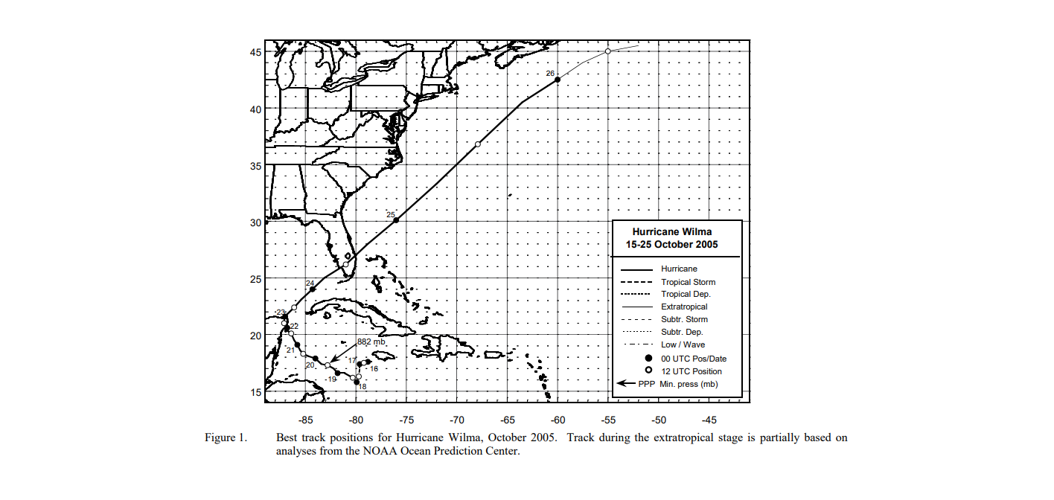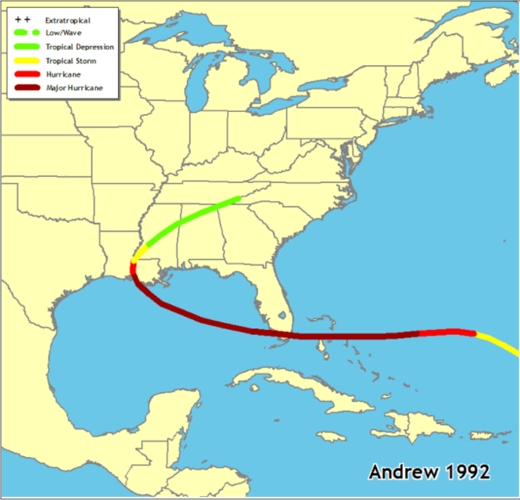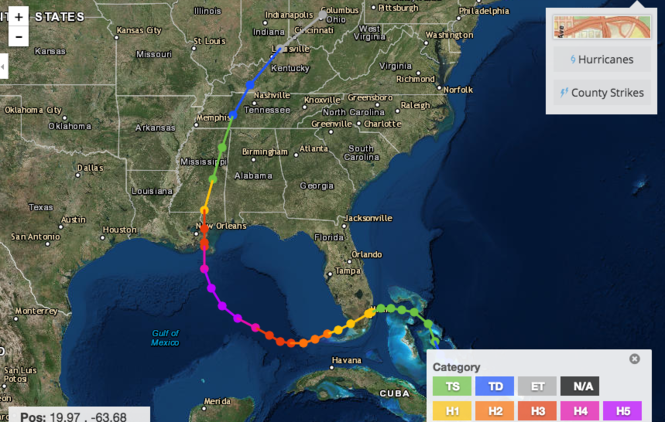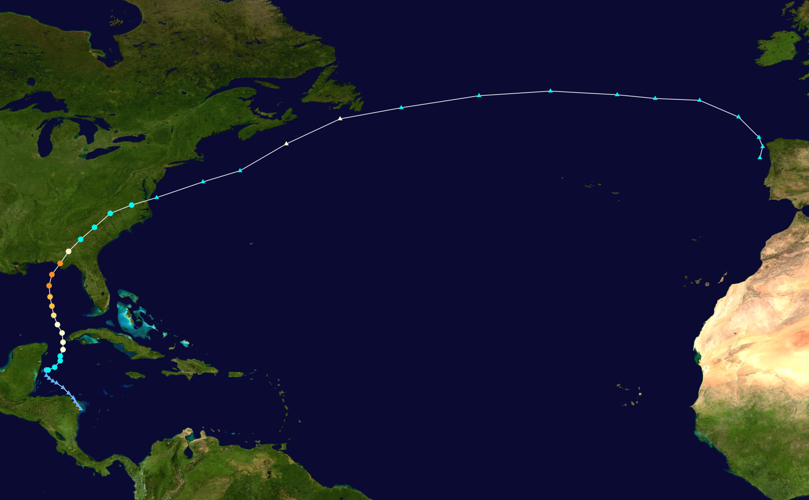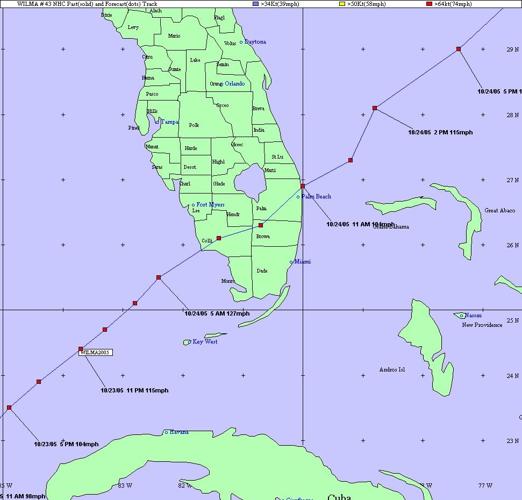The 10 most expensive hurricanes in U.S. history, even when damage estimates are adjusted for inflation, all occurred in the past 30 years. All but one of them struck in the 21st century.
The storms hit Florida (4), Louisiana (2) and Texas (2), as well as Alabama, Georgia, Mississippi, Puerto Rico and New Jersey. Several of them - Katrina and Andrew, for example - hit more than one state.
But it’s not just coastal states where costs mount. Once a hurricane comes ashore and weakens, cut off from the warm seawater that fuels it, it still carries immense amounts of moisture. As it moves hundreds of miles inland and breaks up, it continues to dump that moisture in the form of phenomenal rain that floods creeks and rivers, causing even more damage.
Ranked here, by estimated damages in 2020 dollars, are what the National Centers for Environmental Information consider to be the 10 most expensive hurricanes in U.S. history:
10. Michael, 2018, $25.7 billion
Michael blasted the Florida Panhandle as a Category 5 hurricane on Oct. 10. It caused catastrophic damage from wind and storm surge from Panama City Beach to Mexico Beach to Cape San Blas before barreling into Georgia.

Hurricane Michael blasted the Florida Panhandle as a Category 4 hurricane on Oct. 10, 2018.
9. Wilma, 2005, $25.8 billion
Wilma made landfall as a Category 3 hurricane on Oct. 23, 2005, near Cape Romano, Fla. It raked the Florida peninsula in less than five hours and headed out to sea.

Hurricane Wilma made landfall as a Category 3 hurricane on Oct. 23, 2005, near Cape Romano, Fla. It raked the Florida peninsula in less than five hours and headed out to sea.
8. Ivan, 2004, $28.9 billion
Ivan made landfall as a Category 3 hurricane just west of Gulf Shores, Alabama, on Sept. 16, 2004. It weakened as it moved inland, producing more than 100 tornadoes and heavy rain across much of the southeastern United States, before merging with a frontal system over the Delmarva Peninsula on Sept. 18.
But an extratropical low pressure remnant of Ivan drifted southward in the western Atlantic for several days, crossed southern Florida and re-entered the Gulf of Mexico on Sept. 21. It became a tropical storm, then weakened into a tropical depression before blowing into southwest Louisiana on Sept. 24.

Ivan made landfall as a Category 3 hurricane just west of Gulf Shores, Alabama, on Sept. 16, 2004.
7. Ike, 2008, $36.9 billion
Ike came ashore at the north end of Galveston Island, Texas, on Sept. 13, 2008, as a Category 2 hurricane. It weakened as it moved inland across eastern Texas, Arkansas and the Mississippi River Valley but was still gusting with hurricane-force winds into the Ohio River Valley and on to Canada.

Hurricane Ike came ashore at the north end of Galveston Island, Texas, on Sept. 13, 2008, as a Category 2 hurricane. It weakened as it moved inland across eastern Texas, Arkansas and the Mississippi River Valley but was still gusting with hurricane-force winds into the Ohio River Valley and on to Canada.
6. Andrew, 1992, $50.5 billion
Andrew blasted south Florida on Aug. 24, 1992, making landfall at Homestead as Category 5 hurricane. It moved west in the Gulf of Mexico, curved north and came ashore in Louisiana as a Category 3 hurricane near Morgan City.

Hurricane Andrew blasted south Florida on Aug. 24, 1992, making landfall at Homestead as Category 5 hurricane. It moved west in the Gulf of Mexico, curved north and came ashore in Louisiana as a Category 3 hurricane near Morgan City.
5. Irma, 2017, $52.5 billion
Hurricane Irma was big, slow and long-lived. It made its first U.S. landfall at Cudjoe Key, Florida, as a Category 4 storm on Sept. 10, then tracked through Florida's Big Bend, southwest Georgia and southeast Alabama.

Hurricane Irma made its first U.S. landfall at Cudjoe Key, Florida, as a Category 4 storm on Sept. 10, then tracked through Florida's Big Bend, southwest Georgia and southeast Alabama.
4. Sandy, 2012, $74.8 billion
At its strongest, Sandy was a Category 3 hurricane. But it had lost hurricane status by the time it slammed into Brigantine, New Jersey, on Oct. 29, 2012.
Nonetheless, it wreaked havoc throughout the New York City area. Its effects extended as far west as Wisconsin, and it even caused blizzards in western North Carolina and West Virginia.

At its strongest, Hurricane Sandy was a Category 3 hurricane in the Atlantic Ocean. But by the time its eye crossed inland at Brigantine, New Jersey, on Oct. 29, 2012, it had lost hurricane status, yet it wreaked havoc throughout the New York City area.
3. Maria, 2017, $95.5 billion
In just 18 hours, Maria intensified from a a Category 1 to a Category 5 hurricane before slipping to Category 4 on Sept. 20 and making landfall at Yabucoa, Puerto Rico.
2. Harvey, 2017, $131.3 billion
Harvey was the first major hurricane to strike the middle Texas coast in 47 years. It came ashore Aug. 25 at San Jose Island as a Category 4 storm then hit the mainland towns of Rockport and Fulton.
The storm slowed then meandered over land near the coast for two days before moving offshore. As a tropical storm, it made another landfall in Louisiana at Cameron on Aug 30.

Harvey was the first major hurricane to strike the middle Texas coast in 47 years. It came ashore Aug. 25 at San Jose Island as a Category 4 storm then hit the mainland towns of Rockport and Fulton. It meandered over land near the coast for two days before moving offshore then, as a tropical storm, made another landfall in Louisiana at Cameron on Aug 30.
1. Katrina, 2005, $170 billion
By far the costliest hurricane in U.S. history, Katrina made landfall Aug. 25, 2005, as a Category 1 storm near the Dade-Broward County line in Florida. It entered the Gulf of Mexico and strengthened to Category 5, then fell to Category 3 by the time it roared ashore Aug. 29 in Louisiana at Buras. It made a third landfall near the Louisiana-Mississippi line before moving into the Tennessee River Valley.
Much of Katrina's destruction was due to the failure to federal levees in New Orleans.

By far the costliest hurricane in U.S. history, Hurricane Katrina made landfall Aug. 25, 2005, as a Category 1 storm near the Dade-Broward County line in Florida. It entered the Gulf of Mexico and strengthened to Category 5, then fell to Category 3 by the time it roared ashore Aug. 29 in Louisiana at Buras. It made a third landfall near the Louisiana-Mississippi line. Much of Katrina's destruction was due to the failure to federal levees in New Orleans.


